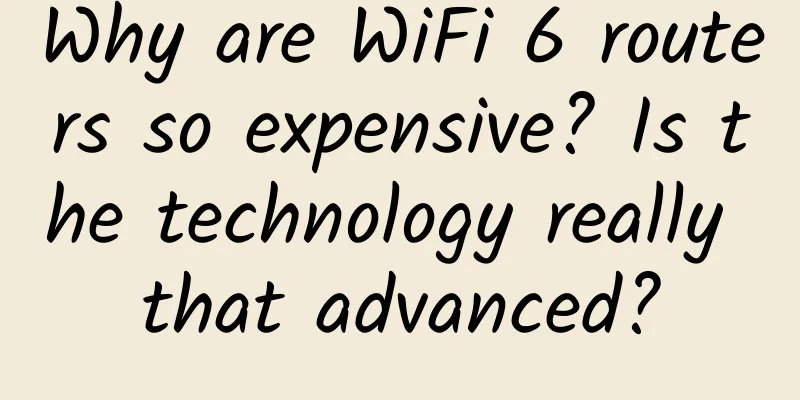The next generation of WIFI is here! Google applies for 6GHz WiFi testing, which is expected to be popularized in 2022

|
In the Wi-Fi world, 6GHz will be a major breakthrough. Whoever holds it will embrace both "money" and "opportunities". Of course, Google wants in on the action, too. According to media reports, Google is seeking to test the next-generation 6GHz WiFi in 17 states in the United States. 6GHz, 17 states, 24 months, Google paves the way for a new generation of devices Google has applied to the U.S. government for authorization to conduct radio trials in the vicinity of the 6GHz band (5,650 MHz - 7,125 MHz) for 24 months, according to a revised letter on Saturday. The 17 states are: Arizona, California, Colorado, Florida, Georgia, Illinois, Iowa, Kansas, Nebraska, Nevada, New York, North Carolina, Oklahoma, Oregon, Texas, Utah and Virginia. Google hopes to test it in one or two cities in each state, with the exception of California (which includes seven cities, including Los Angeles and San Francisco). "Google plans to conduct experimental propagation testing in the 6 GHz band to generate technical information relevant to providing reliable broadband connectivity using these frequencies," the company wrote in its request. In April this year, the US Federal Communications Commission (FCC) voted to open up a section of spectrum in the 6GHz band. Several large technology companies supported the proposal to open a section of the 6GHz spectrum for unlicensed use, but others opposed it. AT&T said the ruling increased the risk of "interference with existing infrastructure." Google has acknowledged some of the concerns. In its testing proposal, Google pledged that its work would be done "without causing harmful interference to other authorized users." 6Ghz WiFi will provide more than double the speed of existing WiFi. However, don't expect it to arrive immediately. Google has asked for 24 months to conduct tests. Google's interest in the next generation of WI-FI is inevitable, as it paves the way for its smart devices. The company has its own Nest home WiFi device line, and Google's "sister" Access, which belongs to the same parent company Alphabet, is a company focused on providing people with ultra-high-speed fiber optic homes. In addition, Google has a range of devices, such as smartphones and smart speakers, not to mention the company's plans to launch more devices based on the next generation of Wi-Fi. What problems can 6GHz solve? "Dig a big hole to stop traffic jams!" Have you ever encountered this problem: when your mobile phone, tablet, and computer are connected to WI-FI at the same time, the speed starts to drop. If the whole family is connected, the connection will be even slower. According to statistics, in the next five years, each household will have an average of about 30 smart devices. What 6GHz Wi-Fi can solve is the problem of "network congestion". At present, our Wi-Fi has two common frequency bands: 2.4GHz and 5GHz. What is the difference between them? For example, if you have a box of milk, it represents the radio spectrum. If you poke a needle through the milk box, a thin stream of water will spray out; if you take a big nail and stick it into the other side, a large stream of milk will flow out, but obviously, this side will not spray too far. This is a classic analogy for 2.4GHz and 5GHz. "Prick with a needle" is equivalent to 2.4GHz, and its frequency range is only 70MHz, with small flow rate but long transmission distance; "Poke it with a nail" is equivalent to 5GHz. With a bandwidth of 500MHz, its traffic is large, but the propagation distance is not as good as 2.4GHz. In other words, if you want to penetrate walls, use 2.4GHz, and if you want speed, use 5GHz. What about 6GHz? Come on, make a bigger hole in the milk carton and let more milk gush out. Of course, 6GHz may have a shorter propagation distance. However, 6GHz promises faster, more reliable connections with less wireless interference between devices. Technically, 6GHz Wi-Fi has the same theoretical top speed as 5GHz Wi-Fi: 9.6 Gbps. So, is 6GHz Wi-Fi faster? While 2.4GHz transmits farther, 6GHz can transmit data faster. But what really matters is not the specific frequency used, but how large the band is used. Earlier this year, the FCC will open up 1,200MHz of spectrum in the 6GHz band. Remember, for the past 20 years, Wi-Fi has been operating on about 400 megahertz of spectrum, with all the available channels split up in a limited amount of space. Each channel on the 6GHz band is expected to be 160MHz in size. This is what makes 6GHz so awesome: this new band triples the space available to traditional Wi-Fi. Spectrum comparison (Source: Broadcom) If you’re the first person in your building to install a 6GHz router, no one will be competing with you when it comes to connectivity. The next trend of smart devices Some analysts say smartphones may be the first consumer devices to adopt the next generation of Wi-Fi. It is predicted that by 2021, 316 million devices supporting Wi-Fi 6E will be shipped. After smartphones, tablets are expected to follow, and TVs are expected to adopt it in 2022. The tech industry appears to be in a battle over 6GHz Wi-Fi, and Google has apparently submitted its challenge. |
Recommend
What is missing for blockchain to be used commercially on a large scale?
I believe that many people have heard about the e...
Review of 5G standards in 2020: R16 standard freezes and improves capability triangle, opening a "new era" for commercial use
[[374016]] In order to better review the gratifyi...
Talk about the past and present of WiFi
When it comes to the development of WiFi, we have...
How to avoid JS memory leaks?
[[416172]] Many developers may not care about whe...
HostDare: CN2 GIA line CSSD series 15% discount from $30/year, CKVM series 10% discount from $45/year
HostDare continues to offer discount codes for CN...
Huawei and Chongqing jointly build cloud-based intelligent industries at the first AI Expo
[51CTO.com original article] On the afternoon of ...
Do you have an idle router? Why not transform it into an AP?
With the rapid development of wireless networks, ...
Can the United States' 6G layout surpass 5G and surpass my country?
At the 2019 Mobile World Congress, Huawei brought...
5G messaging may be officially commercialized this year
[[381618]] Although personal text messaging has b...
80VPS: Hong Kong/US CN2 server from 350 yuan/month, cluster server from 800 yuan/month
80VPS is an early-established Chinese hosting com...
Facebook and Google plan to lay submarine cables from the United States to Southeast Asia
On March 29, according to foreign media reports, ...
In the new infrastructure era, intelligent connectivity is driving digital transformation into the fast lane
Bi Shouwen, Vice President of H3C Group and Presi...
How to improve the operational capabilities of data centers?
Data center operation is an important part of an ...
DNS communication protocol based on privacy protection technology
The Domain Name System (DNS) is an Internet basic...









